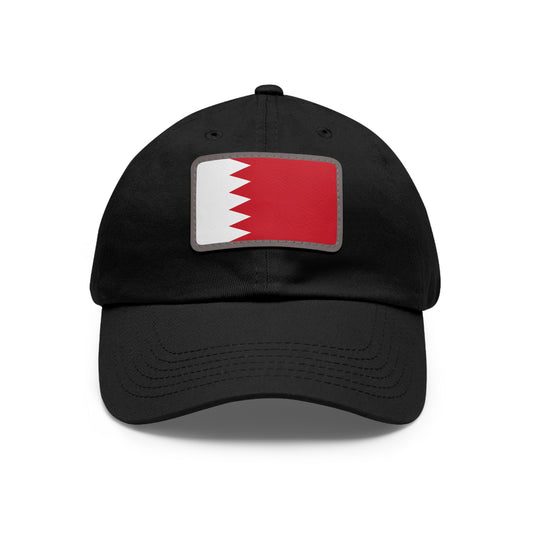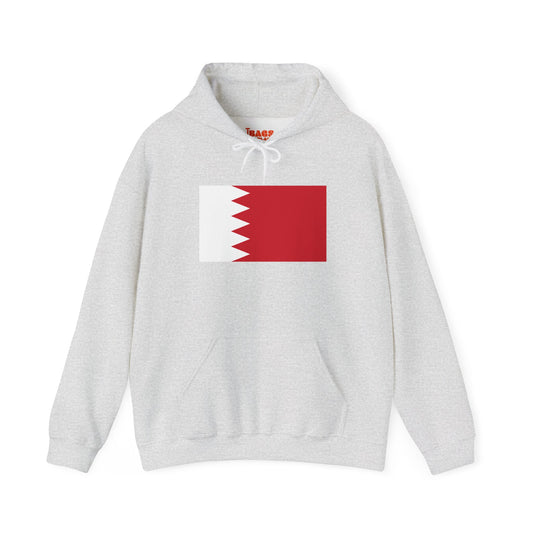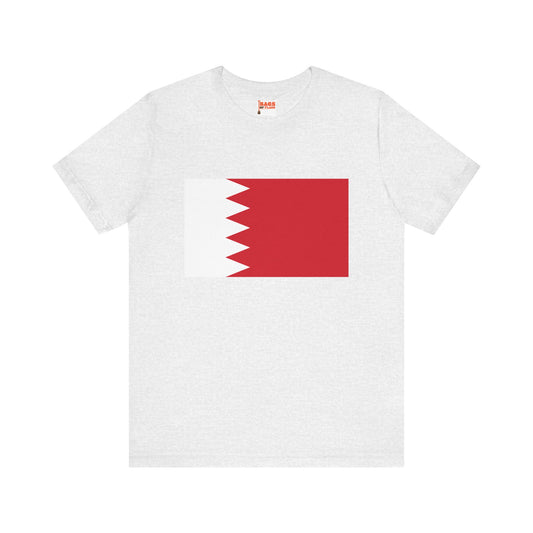-
Bahrain Pillow
Regular price $22.65 USDRegular priceUnit price / per -
Bahrain Backpack
Regular price $59.79 USDRegular priceUnit price / per -
Bahrain Leather Patch Hat
Regular price $18.85 USDRegular priceUnit price / per -
Bahrain Sweatshirt
Regular price $34.15 USDRegular priceUnit price / per -
Bahrain Flag Sweatshirt
Regular price $34.15 USDRegular priceUnit price / per -
Bahrain Mug
Regular price $11.65 USDRegular priceUnit price / per -
Bahrain Trucker Cap
Regular price $14.90 USDRegular priceUnit price / per -
Bahrain Hoodies
Regular price $34.40 USDRegular priceUnit price / per -
Bahrain T-shirts
Regular price $22.79 USDRegular priceUnit price / per -
Bahrain Flag Hoodies
Regular price $34.40 USDRegular priceUnit price / per -
Bahrain Flag on T-shirt
Regular price $22.79 USDRegular priceUnit price / per
Collection: Bahrain
The Bahrain flag symbolizes national pride and identity for the people of Bahrain. Its design and colors hold significant meaning, reflecting the country's history and values. In this blog post, we will explore how the Bahrain flag has evolved from its inception to its current relevance in today's world.
Overview of the Bahrain Flag

The flag of Bahrain showcases a distinct and vibrant design. It is characterized by a vertical white band and a larger red field, separated by five serrated triangles pointing towards the hoist side. This unique feature not only adds to the flag's aesthetic appeal but also serves a symbolic purpose. The red field is a traditional color in Arab flags, representing the heritage and bravery of the Bahraini people and the Islamic faith, particularly the Kharijite sect.
On the other hand, the white color symbolizes peace and denotes the country's commitment to harmony and diplomatic relations. The serrations, numbering five, are deeply symbolic, each representing one of the five pillars of Islam, which is the cornerstone of Bahraini culture and society. With its colors and symbols, this flag represents Bahrain's identity, its deep-rooted Islamic faith, and its aspirations for peace and unity among its people.
Historical Context

The evolution of the Bahrain flag is closely tied to the nation's historical journey and reflects changes in political and social landscapes. Initially introduced in 1932, the flag has undergone several transformations before arriving at its current design. The initial flag bore horizontal bands of white and red, starkly different from today's serrated design. This initial version symbolized the truce with the British, where the white stripe represented peace.
In 1972, the flag underwent a significant redesign, which included a white triangle at the hoist side and introduced the notion of serration for the first time. This change laid the groundwork for future adaptations, embedding more profound symbolism into the flag’s aesthetic.
The most recent and significant change occurred in 2002, a pivotal year that witnessed the adoption of the current flag design and coincided with the National Action Charter referendum. This landmark event underscored Bahrain’s commitment to political reform and democratization. This redesign reduced the number of serrated triangles from eight to five, each now representing one of the five pillars of Islam, further embedding the nation’s Islamic heritage into its national symbol.
Throughout these changes, the Bahrain flag has remained an emblem of national unity, reflecting the country's evolving identity and aspirations for the future.
Symbolism of the Bahrain Flag
The Bahrain flag's distinctive design goes beyond aesthetic appeal, embodying profound symbolism that resonates with the nation's heritage and beliefs. The serrated division between the white and red sections, featuring five white triangles, symbolizes the Five Pillars of Islam, a core component of the country's cultural and religious identity. These pillars serve as the foundation of Islamic faith, guiding the daily lives and practices of Bahrainis.
The red color, a traditional hue in many Arab flags, signals the bravery, strength, and resilience of the Bahraini people. It also reflects the historical significance of Islam's early days, particularly the Kharijite sect. Meanwhile, white symbolizes a commitment to peace and the pursuit of harmonious relations within Bahrain and beyond its borders. Together, these elements combine to create a flag that represents Bahrain's national identity and its dedication to unity, faith, and a peaceful future.
Current Relevance
Today, the Bahrain flag is critical in fostering a sense of national identity and pride among its citizens. It is prominently displayed during significant national celebrations such as Independence Day and National Day, underscoring its importance in the cultural and social fabric of the nation. Additionally, the flag is a staple at military ceremonies, where it symbolizes the courage and dedication of Bahraini armed forces, and at various other public events, highlighting its role in unifying the country.
Despite its widespread use and the unity it symbolizes, the Bahrain flag has also been a focal point in discussions surrounding political dissent and calls for reform within the country. Its presence in demonstrations and rallies reflects its powerful status as a symbol of governmental authority and civic aspiration. This dual role underscores the flag's complex significance in Bahrain's ongoing narrative, bridging traditions with current ambitions and challenges.
The flag's role extends beyond formal occasions. It is integrated into everyday life, serving as a reminder of the nation’s heritage, values, and the collective aspirations of its people. Its prominence during national dialogues and debates showcases the flag's continued relevance as a symbol of national identity, unity, and resilience in the face of internal and external challenges.
Additional Facts
In Bahrain, the protocol surrounding the flag is deeply ingrained in the cultural fabric, emphasizing the respect and reverence for this national symbol. On national celebrations such as Independence Day, the flag is ubiquitously displayed, adorning public buildings, streets, and homes, showcasing the unity and pride of the Bahraini people. This widespread display underscores the importance of the flag as a beacon of national identity and collective memory.
The handling of the Bahrain flag follows strict guidelines to maintain its dignity. It must always be handled with utmost care and respect, ensuring it never touches the ground, signifying the high esteem in which the nation holds its symbol. Additionally, the flag is to be raised briskly and lowered ceremoniously, reflecting the pride and respect accorded to national symbols.
An interesting protocol involves the correct orientation of the flag during display. The flag must always be positioned correctly, with the white band on the hoist side and the five serrated triangles pointing towards the flagpole. Incorrect display, especially inverting the flag, is seen as a significant mark of disrespect and is strictly avoided.
Moreover, the flag's presence is not limited to national events; it is a constant in everyday life, symbolizing Bahrain's enduring spirit and heritage. It serves as a visual reminder of the country's aspirations, values, and the unyielding bond that ties its people together, reinforcing the flag's role as a symbol of national unity and pride.






















